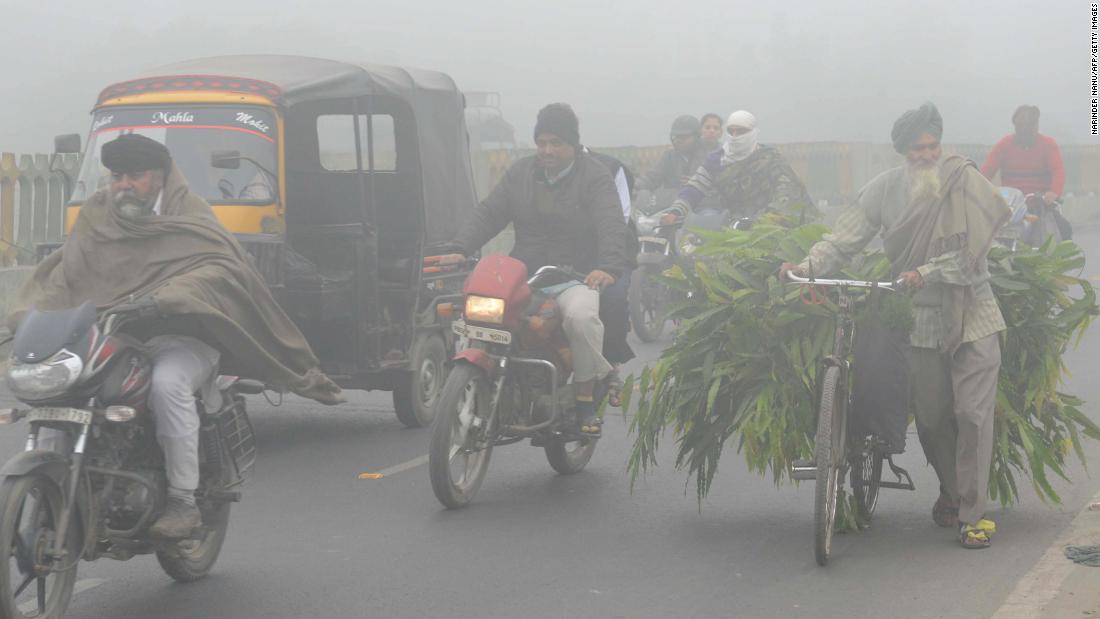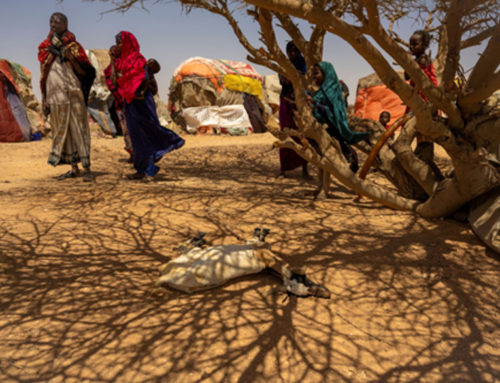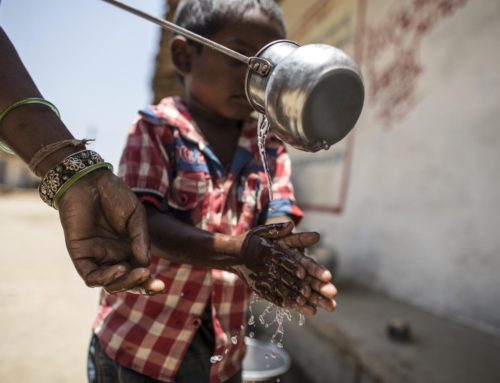This year, on World Environment Day, people across the globe in villages, towns, cities and nations celebrated by pledging to #BeatAirPollution. The harmful effects of air pollution on health and environment are known to all. Jamsheed Cooper, in this blog, muses over the state of India’s air quality and what steps can be taken to make the air that we breathe cleaner and healthier.
Air pollution is now a more serious global health issue than smoking, high blood pressure, child and maternal malnutrition. A walk down New Delhi’s ceremonial Rajpath boulevard will show you all you need to know about the state of air quality in India. While Delhi is significantly more polluted than most Indian cities, 22 out of the 30 most polluted cities in the world are in India, with Gurugram and Ghaziabad topping the list.1 According to the State of Global Air 2019 report, India had an air pollution mortality burden of 1.2 million people in 2017.2 That is 1.2 million people who died directly from air pollution, or from physiological complications arising from it. Though India’s per capita emission of greenhouse gas is low, a further 140 million people breathe air that is 10 times over the WHO safe limit. Chronic obstructive pulmonary disease is now India’s largest cause of death after heart disease.3
India faces a dilemma of choices when it comes to balancing the industrial, development, and transportation needs of the country and upholding air pollution standards which might affect the business and development environment of a rapidly expanding economy. There are other factors that compound the aggregate health effects of air pollution in India, with poverty being the overarching concern. It is usually the poor and marginalized that bear the brunt of the health burden of dirty air in India, and make up a sizeable chunk of the above mortality burden statistic.
It is important then to understand the causes of unbridled air pollution, what the Government of India has done over the years and potential policies for curbing persistent carbon emissions. These questions are especially pertinent given India’s national energy and development needs.
What causes so much pollution?
India is the third largest emitter of carbon emissions after China and the US. The biggest sources of air pollution in urban India are vehicular exhaust fumes, fossil fuel fired power plants, construction dust, industrial emissions, while the burning of stubble after crop harvests and household biomass cookstoves contribute to poor air quality in rural areas.
The Government of India has been pushing an ambitious renewable energy project to expand India’s capacity for renewable energy generation. While India has imposed tougher emissions standards for power plants and state utilities, which own many of India’s ageing coal power plants, they have failed to comply. 60% of India’s combined power output is still generated from 246 highly polluting and inefficient coal-fired power plants.4 The International Energy Agency has found that India’s thermal power plants (coal, oil, and natural gas) emit 50 to 120 percent more CO2 per kWh produced compared to the those in the European Union.5 This presents the Government of India as well as Indian power companies with the opportunity to significantly reduce CO2 emissions through acquisition of better technology.
Traffic congestion in Indian cities also contributes heavily to India’s poor air quality. In the last few decades, the number of vehicles on India’s roads and transport systems has skyrocketed, resulting in an increase in the number of vehicles per kilometre of available road. This is exasperated by a lack of organized intra-city divided-lane highways and expressways networks, inter-city expressways, and chaos on the road stemming from poor enforcement of traffic laws. Poor traffic management also ensures that traffic moves slower, and that engine fuel is burned inefficiently, polluting more per journey.6
Household pollution from the combustion of biomass and wood is the main culprit for the persistent and dangerous haze that hangs over rural India. Cookstoves or chulhas are used by rural communities for food preparation and heating, and usually comprise burning wood fuel, coal, livestock excrement, and dried grass and leaves. The World Health Organization outlines the health risks involved in the use of household combustion of fuel, and states that 300,000 to 400,000 deaths result annually from indoor air pollution and carbon monoxide poisoning.7 While the government has provided cooking gas cylinders to more than 50 million households, the high cost of gas refills means that biomass burning remains a major source of pollution.
What are the health risks?
22 out of the 30 most polluted cities in the world, when measuring atmospheric fine particulate matter (PM2.5), are in India. A study published in the Lancet journal that studied the impact of PM2.5 concentration on death, disease burden, and life expectancy found that “in 2017, no state in India had an annual population weighted ambient particulate matter mean PM2·5 less than the WHO recommended level of 10 μg/m³, and 77% of India’s population was exposed to mean PM2·5 more than 40 μg/m³, which is the recommended limit set by the National Ambient Air Quality Standards of India.”8 Moreover, 56% of India’s population was still exposed to household air pollution from solid fuels, resulting in an estimated 0·67 million deaths to ambient particulate matter pollution and 0·48 million deaths to household air pollution. The authors also estimate that life expectancy would be increased by 1.7 years if levels of pollution had been lower than the minimum level associated with health loss. Another report by the Washington Post, life expectancy in India was cut short by an average of 5.3 years.9
It is also important to consider the effect of air pollution on younger generations. Reports indicate that, unsurprisingly, the effect of air and particulate pollution on children is significantly more severe. Dr. Sai Kiran Chaudhuri, the pulmonary chief of the Delhi Heart & Lung Institute highlights that 2.2 million children in Delhi, about half of the city’s youth, have abnormalities in their lung function — asthma, bronchitis, spasmodic cough, and others.10 Air pollution also adversely impacted growth and weight indicators according to the Brookings Institution.11 Persistent exposure to air pollution during the first trimester of gestation was linked to increased stunting and underweightedness in children, which in turn results in long lasting health complications such as poor mental development, cardiovascular disease, chronic respiratory failure and infections. Counted over millions of children, this also has a strongly detrimental effect on the human capital of India, and thus its GDP. The study states that an increase of 10% in GDP is a likely benefit of the complete elimination of stunting in India.
Policy Recommendations for the Indian Government
Over the last few decades, Indian authorities have been reluctant to address the problem of increased air pollution, especially throughout northern India, due to fear of reprisal by heavy industries, automakers, and other powerful vested interests. The government’s attempts to tackle the problem have traditionally been incremental in nature, as opposed to ambitious plans to ensure cleaner air.
In 2017, the Government in Delhi took steps to launch the Odd-Even rule policy, in which cars with number plates ending with odd and even number will be permitted to use the roads on alternating days. Many have claimed the policy is too little too late, and that more bold and decisive policies to tackle air pollution are needed. In 2016, the Government of India also committed itself to a 50% reduction in households using solid fuel for cooking and heating.12 In late 2018, Delhi’s government installed 54 large air purifiers at large traffic intersections throughout the city in order to remove fine vehicular pollution from the air. Again, however, critics have been cautious about the efficacy or cost of the machines. Other measures include air filters have also been fitted atop public buses. The Central Pollution Control Board of India has other plans in the making, such as those to sprinkle hygroscopic magnesium chloride and cement powder on roads and construction sites to absorb water from the air, making the ground moist and keeping dust from becoming airborne, as well as a cloud-seeding project that generates artificial rain to wash away pollution.13 Other examples of programs that are being tested are Haryana’s ‘Happy Seeder’ program, in which the state government is providing farmers with a machine called a Happy Seeder, which converts agricultural residue to fertilizer.
However, such incremental efforts towards cleaning India’s air are eclipsed by the leviathan number of thermal power plants, construction sites, and combustion engines that operate every day. In the coming decades, the Government of India will need to commit, invest and modernize heavily in a number of areas relating to renewable energy generation, cleaner and more efficient technology in power plants, meaningful policies on vehicular pollution and manufacture and public transport systems.
It will also need to conduct a comprehensive fact-finding mission to understand which areas of the country contain the most pollution, and how much pollution each area generates. This could be done by the mandatory establishment of automatic emission-measurement stations in all highly polluting industrial plants, which would send pollution measurements to national pollution authorities and allow them to better enforce pollution rules, and develop new ones.
A concerted national effort aimed at turning agricultural residue into profitable products could reduce PM2.5 levels in North India in the winter. A robust supply of electricity would also allow for the phasing out of polluting diesel generators. Similarly, providing even more clean-burning liquefied petroleum gas cooking stoves to replace biomass burning would cut households pollution levels even further. Enforcing pollution standards for industries, and introducing legions of electric transport around the country would also help immensely.
The Government of India will soon have to reckon with its increasingly severe pollution problem and the myriad health costs that are associated with it. There are currently several pollution control laws and policies established on paper but are not being enforced in reality. India’s biggest problem is, therefore, implementation of pollution policies, as firework bans have not worked, vehicle emissions test centres falsify compliance data, and construction companies rarely take the required steps to ensure debris and dust is not spread. Lastly, a gargantuan amount of political will and public involvement must be generated. It is, after all, the public who is affected most. Garnering public assistance and trust, along with concrete measurable actions on the part of the government will ensure over time, that India’s air becomes cleaner and more breathable.
________________________________________________________________________________
1 Griffiths, James. 22 Of the Top 30 Most Polluted Cities in the World Are in India. CNN, 5 Mar. 2019, edition.cnn.com/2019/03/04/health/most-polluted-cities-india-china-intl/index.html
2 State of Global Air 2019. Economic Times, energy.economictimes.indiatimes.com/etanalytics/reports/coal/state-of-global-air-2019/640.
3,4 Bernard, Steven, and Amy Kazmin. “Dirty Air: How India Became the Most Polluted Country on Earth.” , The Financial Times, 11 Dec. 2018, ig.ft.com/india-pollution/.
5 CO2 Emissions from Fuel Combustion. International Energy Agency, 2011, www.iea.org/media/statistics/CO2highlights.pdf.
6 Barth, Matthew, and Kanok Boriboonsomsin . Real-World CO2 Impacts of Traffic Congestion. UC Riverside, citeseerx.ist.psu.edu/viewdoc/download?doi=10.1.1.367.5168&rep=rep1&type=pdf.
7 Stoves: Green Stoves to Replace Chullahs | India News – Times of India. The Times of India, timesofindia.indiatimes.com/india/Green-stoves-to-replace chullahs/articleshow/5293563.cms?referral=PM.
8 Dandona, Lalit. “The Impact of Air Pollution on Deaths, Disease Burden, and Life Expectancy across the States of India: the Global Burden of Disease Study 2017.” The Lancet, www.thelancet.com/journals/lanplh/article/PIIS2542-5196(18)30261-4/fulltext.
9 “How Many Years Do We Lose to the Air We Breathe?” The Washington Post, WP Company, 19 Nov. 2018, www.washingtonpost.com/graphics/2018/national/health-science/lost-years/?noredirect=on&utm_term=.5bf23000f734.
10 Webber, Tammy. “US Exporting Dirty Fuel to Already Pollution-Choked India.” AP NEWS, Associated Press, 1 Dec. 2017, www.apnews.com/77273861e393412a913fa332054ab2d7.
11 Singh, Prachi, et al. Early Life Exposure to Outdoor Air Pollution: Effect on Child Health in India. Brookings Institution, 19 Mar. 2019, www.brookings.edu/research/early-life-exposure-to-outdoor-air-pollution-effect-on-child-health-in-india/.
12 India Takes Steps to Curb Air Pollution. WHO, www.who.int/bulletin/volumes/94/7/16-020716.pdf.
13 Pelley, Janet. “Does Cloud Seeding Really Work?” CEN RSS, cen.acs.org/articles/94/i22/Does-cloud-seeding-really-work.html.
Featured image source: https://edition.cnn.com/2018/02/01/health/india-air-pollution-crop-burning-subsidy-intl/index.html







Leave A Comment